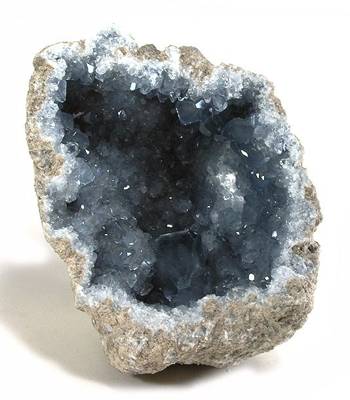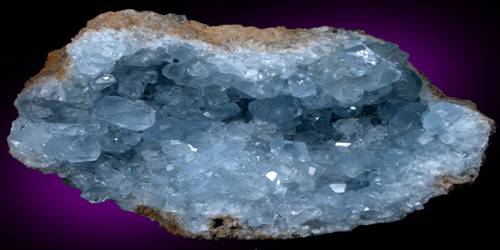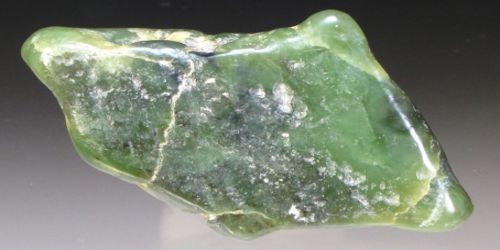Celestine or celestite is a mineral consisting of strontium sulfate (SrSO4). The mineral is named for its occasional delicate blue color. It is a strontium sulfate mineral. Celestine is the principal source of the element strontium, commonly used in fireworks and in various metal alloys.
It was first discovered in 1791 on Kelley Island, Lake Erie. It belongs to the barite group of minerals. It was named after the Latin word for celestial, in allusion to the bluish color of the mineral. In carbonate marine sediments, burial dissolution is a recognized mechanism of celestine precipitation. It is sometimes used as a gemstone.
General Information
- Category: Sulfate minerals
- Formula: SrSO4 sometimes contains minor calcium and/or barium
- Crystal system: Orthorhombic
- Crystal class: Dipyramidal (mmm)

Properties
Celestine is often a colorless mineral, but it can appear green, gray, brown, or blue in color. It exhibits vitreous luster, white streak, and perfect cleavage. It also has a transparent to subtranslucent appearance, brittle fractures, and fluorescent luminescence.
It can be formed into massive granular crystals. The average density of Celestine is 3.95 g/cm3, and its hardness ranges from 3 to 3.5.
- Color: Colorless, white, pale blue, pink, pale green, pale brown, black
- Crystal habit: Tabular to pyramidal crystals, also fibrous, lamellar, earthy, massive granular
- Fracture: Uneven
- Tenacity: Brittle
- Mohs scale hardness: 3 – 3.5
- Luster: Vitreous, pearly on cleavages
- Streak: white
- Diaphaneity: Transparent to translucent
- Specific gravity: 3.95 – 3.97
Occurrence
Celestine occurs in primary sedimentary origin, diagenetic, or, typically, as fissure and cavity fillings; precipitated by migrating strontium-bearing groundwater, or basinal brines in carbonate rocks, concretions, and nodules. It occurs as crystals, and also in compact massive and fibrous forms. It is mostly found in sedimentary rocks, often associated with the minerals gypsum, anhydrite, and halite.
The mineral is found worldwide, usually in small quantities. Pale blue crystal specimens are found in Madagascar.
It can also be found in mafic volcanic rocks and hydrothermal veins. The mineral is closely related to celadonite, hydroxy apophyllite, natrolite, analcime, fluorite, gypsum, anhydrite, dolomite, calcite, strontianite, and sulfur.
Information Source:
















